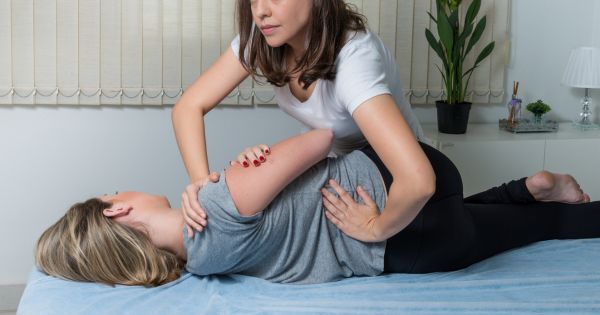Recovering from spine surgery continues with the lifestyle choices you make afterward. Adjustments in posture and overall health habits can significantly influence how well and how quickly you heal. By committing to the right changes, patients can protect their recovery, reduce the risk of complications, and support long-term spine health. Here are key lifestyle changes to make after a spine procedure:
Prioritize Movement and Physical Therapy
Movement may seem scary after a spine surgery, but gentle activity helps your spine heal correctly. Your physical therapist will create a safe exercise plan that matches your recovery stage. These exercises strengthen the muscles around your spine and improve flexibility without putting too much stress on healing tissues.
Start with simple activities like walking short distances. Walking improves blood flow, which brings healing nutrients to your spine. As you get stronger, your therapist will add more exercises that target specific muscle groups. These may include gentle stretching, core strengthening, and balance training.
Physical therapy sessions teach you proper movement techniques that protect your spine. Your therapist shows you how to bend, lift, and turn safely during daily activities. Following these techniques prevents re-injury and helps you return to normal activities.
Focus on Weight Management
Good nutrition gives your body the building blocks it needs to repair spinal tissues. Protein helps rebuild damaged muscles and bones, while vitamins and minerals support the healing process. Eating a balanced diet with plenty of fruits, vegetables, lean proteins, and whole grains provides these key nutrients.
Extra weight puts more stress on your healing spine. If you’re carrying extra pounds, losing weight reduces pressure on your back and can aid recovery. Your doctor or nutritionist can help you create a safe weight loss plan that doesn’t interfere with healing. Staying hydrated is also helpful for spine health.
Practice Good Posture and Ergonomics
Poor posture puts unnecessary stress on your healing spine. Learning proper posture techniques protects your spine and prevents future problems. When sitting, keep your feet flat on the floor and your back straight against the chair. Use a small pillow or lumbar support to maintain your spine’s natural curve.
Your workspace setup matters too. Make sure your computer screen is at eye level so you don’t strain your neck. Your keyboard and mouse should be at a comfortable height that doesn’t require reaching or hunching your shoulders. Taking frequent breaks to stand and stretch also helps prevent stiffness.
Your sleeping position can affect your spine during sleep. Use pillows to support your spine’s natural curves. If you sleep on your side, place a pillow between your knees for support. Back sleepers may benefit from a small pillow under their knees to reduce pressure on the lower back.
Manage Stress and Mental Well-being
Stress can slow down healing and increase pain levels after spine surgery. Your body heals better when you’re relaxed and positive. Finding healthy ways to manage stress helps your mental health and physical recovery.
Deep breathing exercises, meditation, and gentle yoga can reduce stress without straining your healing spine. These activities also help you stay connected with your body and notice how it’s healing. Don’t hesitate to ask for help when you need it. Talking to family, friends, or a counselor can provide emotional support during this challenging time.
Schedule Your Spine Surgery Consultation
Recovery from spine surgery aids healing and helps you stay healthier long-term. Movement and physical therapy strengthen your spine, and good nutrition provides healing nutrients. These changes work together to give you the best possible outcome from your spinal procedure. If you’re contemplating spine surgery or want to discuss your recovery plan, contact a spine surgeon near you today to schedule your consultation and take the first step toward a healthier spine.



